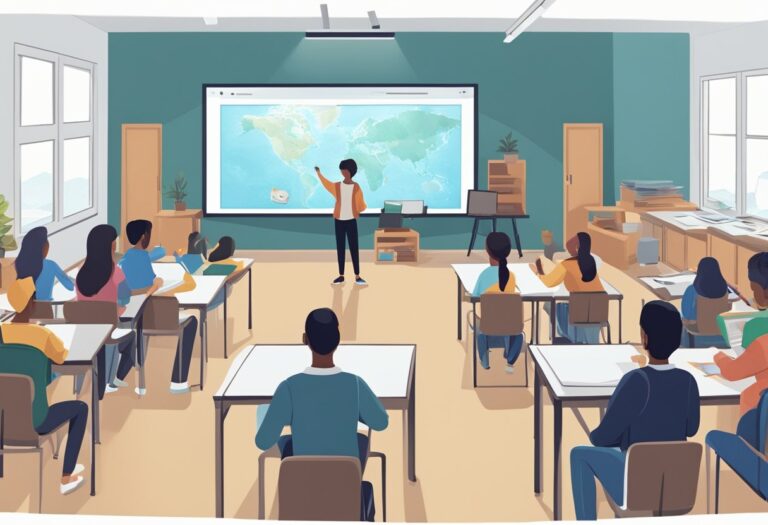The Revolutionary Impact of Teachers Using Animated Learning Tools

Educational transformation happens when dedicated educators embrace innovative teaching methods that resonate with their students’ learning styles. A forward-thinking teacher recognizes that today’s children are digital natives who respond powerfully to visual and interactive content, making the integration of educational media a natural evolution in pedagogical practice. The influence of teachers on student outcomes cannot be overstated, with research indicating that teacher effectiveness accounts for more variance in student achievement than any other school-based factor.
The strategic incorporation of kids animated shows into educational settings has emerged as a game-changing approach that enhances traditional teaching methods rather than replacing them. Studies demonstrate that animation can increase understanding of complex concepts by up to 30%, while simultaneously maintaining student attention and motivation throughout learning sessions.
Understanding the Cognitive Benefits of Animated Learning
The human brain processes visual information significantly faster than text-based content, making animation a natural ally for effective teaching. When teachers use animated content, they tap into multiple learning pathways simultaneously, engaging visual, auditory, and sometimes kinesthetic learning preferences. This multi-sensory approach helps students with different learning styles access the same content through their preferred modalities.
Educational animations excel at breaking down complex processes into digestible steps, allowing teachers to guide students through difficult concepts at an appropriate pace. Shows like “Bluey” demonstrate real-life problem-solving scenarios that teachers can reference when helping students navigate social challenges, while programs like “Doc McStuffins” introduce scientific concepts and critical thinking skills in age-appropriate contexts.
The Teacher as Content Curator and Guide
The most successful educational outcomes occur when teachers act as thoughtful curators of animated content, selecting materials that align with specific learning objectives and student needs. This curatorial role requires deep understanding of both pedagogical principles and the unique characteristics of different animated programs. Teachers must evaluate content for educational value, age-appropriateness, and alignment with curriculum standards.
Effective educators use animated content as a springboard for deeper learning rather than as a standalone educational tool. They create connections between animated scenarios and real-world applications, helping students transfer knowledge from the screen to their daily lives. This bridging function is uniquely human and cannot be replicated by technology alone.
Emotional Intelligence and Social Learning
One of the most significant benefits of combining teacher expertise with educational animation lies in the development of emotional intelligence and social skills. Quality animated programs often feature characters navigating complex social situations, providing teachers with rich material for discussions about empathy, conflict resolution, and emotional regulation.
Teachers who skillfully facilitate these discussions help students develop crucial life skills that extend far beyond academic achievement. The emotional safety created by discussing fictional characters’ experiences allows students to explore difficult topics and practice social skills in a low-risk environment. This approach has proven particularly effective for students who struggle with traditional social learning approaches.
Technology Integration and Digital Literacy
The use of educational animation in classrooms also serves as a gateway for developing digital literacy skills. Teachers can help students become critical consumers of media by analyzing animated content for accuracy, bias, and educational value. This critical thinking approach prepares students for a world where they will encounter vast amounts of digital information and need skills to evaluate its credibility and usefulness.
Furthermore, teachers can use animated content as inspiration for student-created projects, encouraging learners to develop their own educational materials. This creative application deepens understanding while building technical skills that will serve students throughout their academic and professional careers.
Addressing Diverse Learning Needs
The combination of teacher expertise and animated content proves particularly powerful for addressing diverse learning needs within a single classroom. Students with attention challenges often find animated content more engaging than traditional instructional methods, while visual learners benefit from the graphic representation of concepts. Teachers can use this engagement as a foundation for building more traditional academic skills.
For students with special needs, carefully selected animated content can provide social scripts and behavioral models that support skill development. Teachers trained in special education can leverage these tools to create individualized learning experiences that meet each student’s unique requirements while maintaining inclusion in the general classroom environment.
Assessment and Feedback Integration
Modern teachers understand that assessment should be ongoing and multifaceted, and animated content provides new opportunities for evaluating student understanding. Teachers can observe student reactions during viewing, facilitate discussions that reveal comprehension levels, and create projects that demonstrate knowledge transfer from animated scenarios to real-world applications.
The informal nature of discussions around animated content often reveals student thinking that might not emerge through traditional assessment methods. Teachers can use these insights to adjust instruction, provide targeted support, and celebrate student growth in ways that build confidence and motivation.
The synergy between skilled teaching and quality educational animation represents a powerful evolution in educational practice. When teachers thoughtfully integrate animated content into their instruction, they create learning environments that are both academically rigorous and emotionally engaging, preparing students for success in an increasingly visual and digital world.
